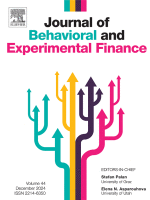
Lo más reciente
This paper applies econometric techniques to explore the possibility of psychological barriers in exchange rate dynamics over different types of exchange arrangements. By analysing over fifty years of daily data for the Colombian peso-dollar exchange rate, we substantiate the presence of hypothesised barriers related to rounded digits, including 1000, 2000, etc., in the thousands of pesos per dollar range. Similarly, barriers are observed in relation to hundreds of pesos per dollar at digits such as 100, 200, etc. Additionally, barriers emerge in terms of tens of pesos per dollar at levels such as 110, 120, etc. However, much depends on the exchange rate regime present. Further results show that the behaviour of exchange rate returns differs both before and after breaches of hypothesised barriers, and it is possible to identify episodes where central bank foreign exchange (FX) interventions can make a difference to the behaviour of exchange rate returns and volatility at the barriers.
